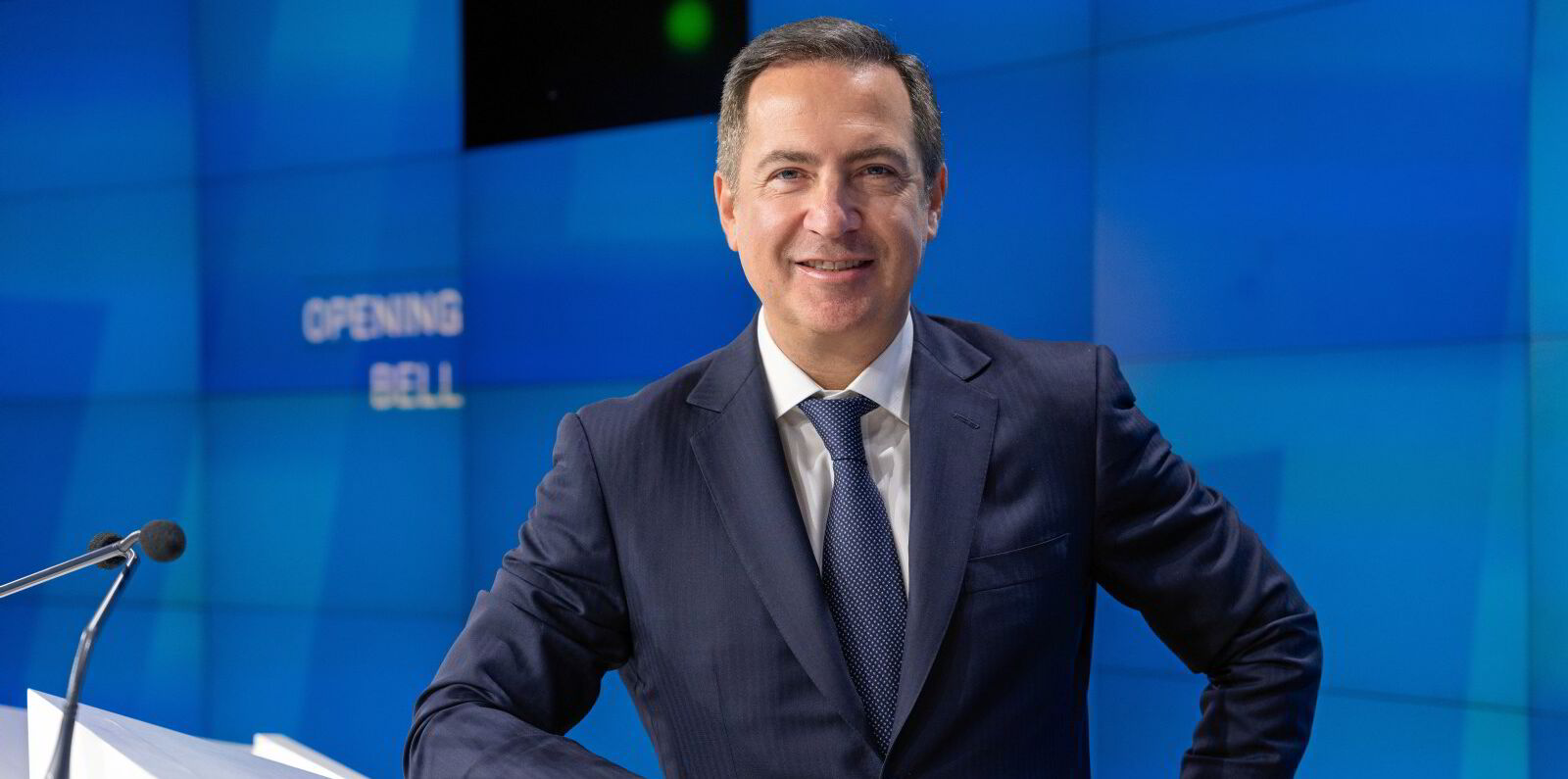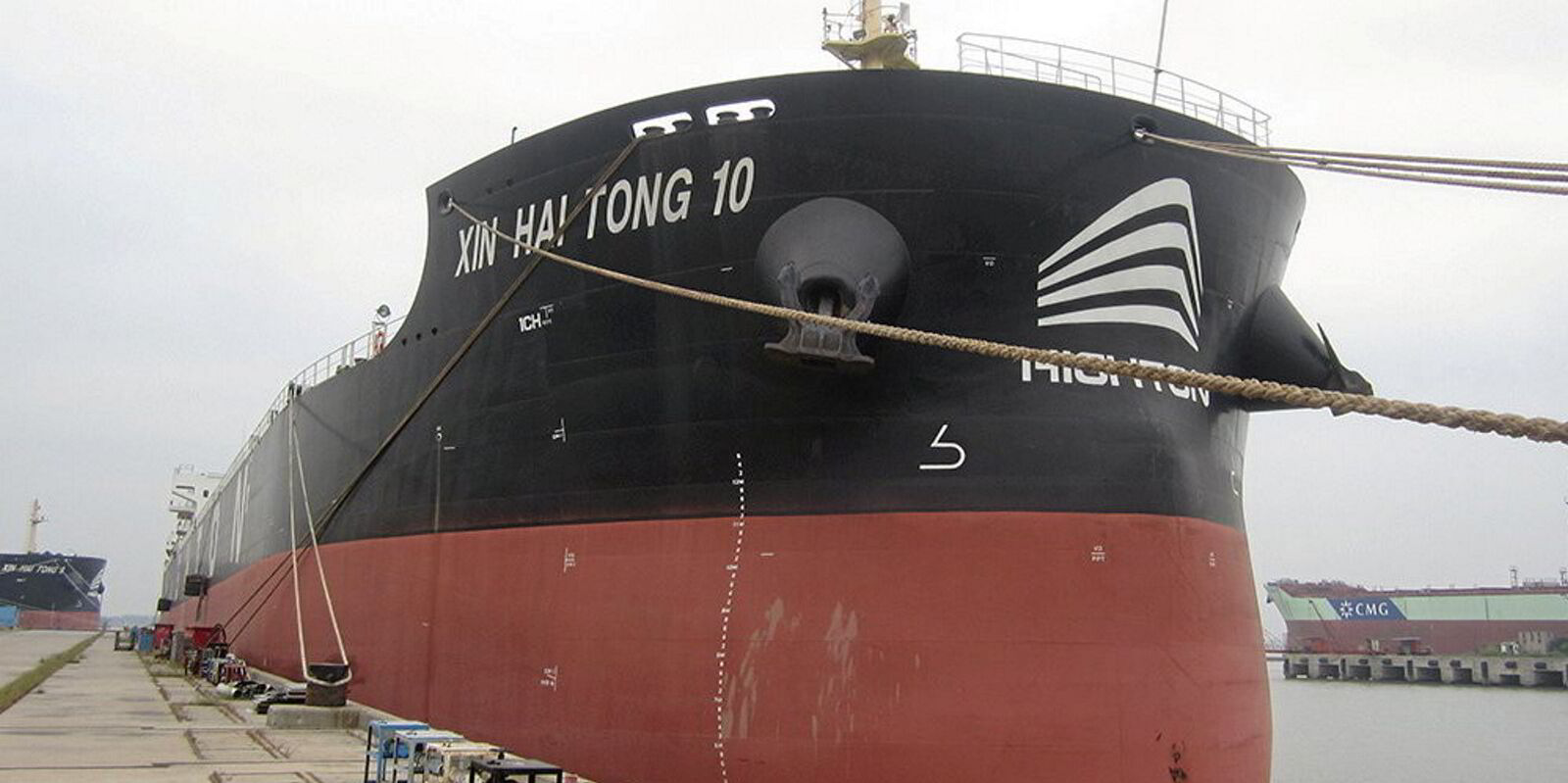Bulker owner United Maritime is making its first foray into the offshore services segment by investing in an energy construction vessel newbuilding.
The Nasdaq-listed shipowner made the announcement as it published its second-quarter results, and also revealed that it has signed a deal to charter in an aframax tanker.
Chief executive Stamatis Tsantanis said the company had taken a minority stake in the energy construction vessel as part of its “diversified investment strategy”.
“This project, in partnership with experienced Norwegian counterparts, is expected to be completed in 2027,” he said.
“The vessel will serve both the oil and gas and renewable energy sectors, addressing the shortage of such vessels amid growing demand.”
The vessel was not identified but is highly likely to be the energy construction vessel ordered last week by Norwind Offshore-linked company Wind Energy Construction, which will be built by Norway’s Vard at its shipyard in Vietnam.
The Vard 3 11-design ship will be delivered in the second quarter of 2027.
It has been designed to serve the offshore wind and subsea market, which includes work in inspection, pipe maintenance and repair and construction and installation, above and below sea.
United, which currently has a fleet of seven owned bulkers, has meanwhile chartered in an aframax tanker for up to nine months. The vessel was not identified but is operated by a “prominent” tanker pool operator.
“This move reflects our commitment to deploying capital across different shipping sectors to deliver optimal outcomes for our shareholders, and we are optimistic about our recent investments,” Tsantanis said.
United Maritime booked $700,000 in net profit for the second quarter of this year, up from a $3m loss in the same period in 2023.
It declared another dividend of $0.075 per share, which has remained unchanged for seven consecutive quarters.
Net revenue increased by 24% year on year to $12.4m during the three months.
This came on the back of better earnings from the United Maritime fleet. Its vessels earned an average time-charter equivalent rate of $17,143 per day during the quarter, up from $16,072 per day a year ago.
The results mean that United’s net loss for the first six months of this year totals $700,000, and its deficit in the first half of 2023 was $7.9m.
The company had $7.7m in cash and equivalents on its balance sheet as of 30 June.
Going forward, Tsantanis said he expects fleet earnings to remain flat at $17,500 per day during the third quarter, based on current forward freight agreement (FFA) values.
“This reflects four of our vessels operating under fixed-rate employment through FFA fixings or time-charter trips,” he said.
United Maritime’s 171,314-dwt capesize Gloriuship (built 2004) has been fixed on a round voyage of 70 to 80 days at a gross daily rate of $22,500, Tsantanis added.
“We are pleased with the secured cash flows for the second half of the year, supporting a healthy dividend,” he added.
United Maritime sold the 82,200-dwt kamsarmax Oasea (built 2010) in May for an undisclosed price to a buyer since revealed as Fafalios Shipping of Greece. The ship has since been renamed Vosporos.
It agreed earlier this year to replace the ship with the 82,200-dwt kamsarmax Nisea (ex-Scarlet Robin, built 2016), which will be chartered on an 18-month bareboat charter from October.
“Our fully delivered fleet will remain at eight vessels, while we continue to explore acquisition candidates with high return potential,” Tsantanis said.
The shipowner currently manages three capesizes, three panamaxes and a kamsarmax.
United Maritime was set up in 2022 as a spin-off of Seanergy Maritime, another company led by Tsantanis.
Tsantanis and other officers and directors of United Maritime combined hold a 17.5% stake.





